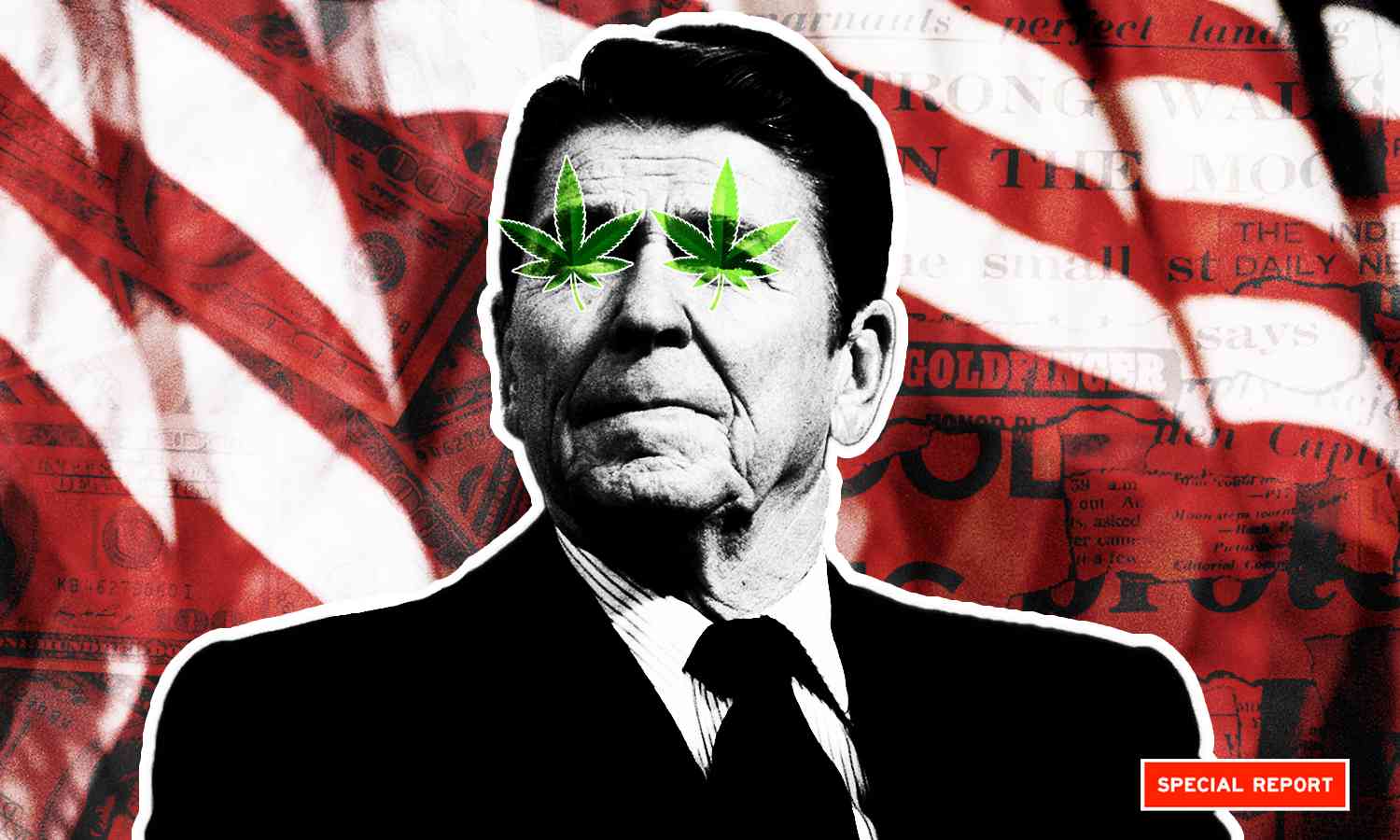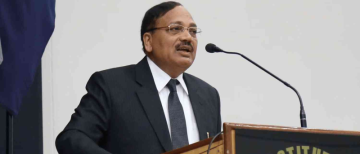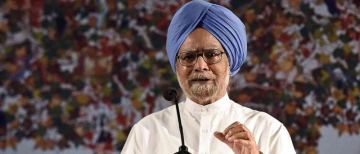Prologue:
Cannabis, Marijuana, Bhaang or Gaanja; we know it by many names. The first mentions of which is in the Atharva-Veda. Indian ancient texts have call it Indracanna, or Indra, the favourite food of the king of Gods. For the matter of fact, the term ‘Cannabis’ is said to have come from the Sanskrit word Canna. As per the Hindu Mythology, when Shiva drank the Halahal (poison) that turned him ‘Neelkanth’, Parvati offered him Bhaang to soothe his throat.

Since the turn of the 21st century, Cannabis has been decriminalised, legalised and regulated across the globe. Yet, the region where the plant originated from still harshly persecutes it. In this VYGR Special Report, we will learn about the origins and history of Cannabis in the Indian subcontinent; and how America got away with stealing 41Billion Dollars from India.
Cannabis in India: A Cultural Odyssey and the Heist of the Century

Cannabis, a botanical specimen originating in the Indian subcontinent and Central Asia, has traversed the globe due to conquests, trade, and commerce. However, while it has found its place worldwide, the Indian subcontinent holds a distinctive historical connection with this plant.
Traces of cannabis usage in India date back as far as 2000 BC. Its various preparations have earned it different names, each serving a unique purpose:
Bhaang, crafted from the leaves and seeds of the plant. Thandai, a concoction created by blending milk with Bhaang. Ganja, a product derived specifically from the flower of the cannabis plant. Charas, an artisanal creation made by hand by rubbing the resin of the plant.
Cannabis consumption throughout the subcontinent has served medicinal, recreational, and spiritual purposes, a testament mirrored in the ancient scriptures of India. Notably, cannabis maintains a significant association with Shiva, a prominent figure entrenched in the fabric of ancient Indian mythology.
Sacred Role of Marijuana in Vedic Texts
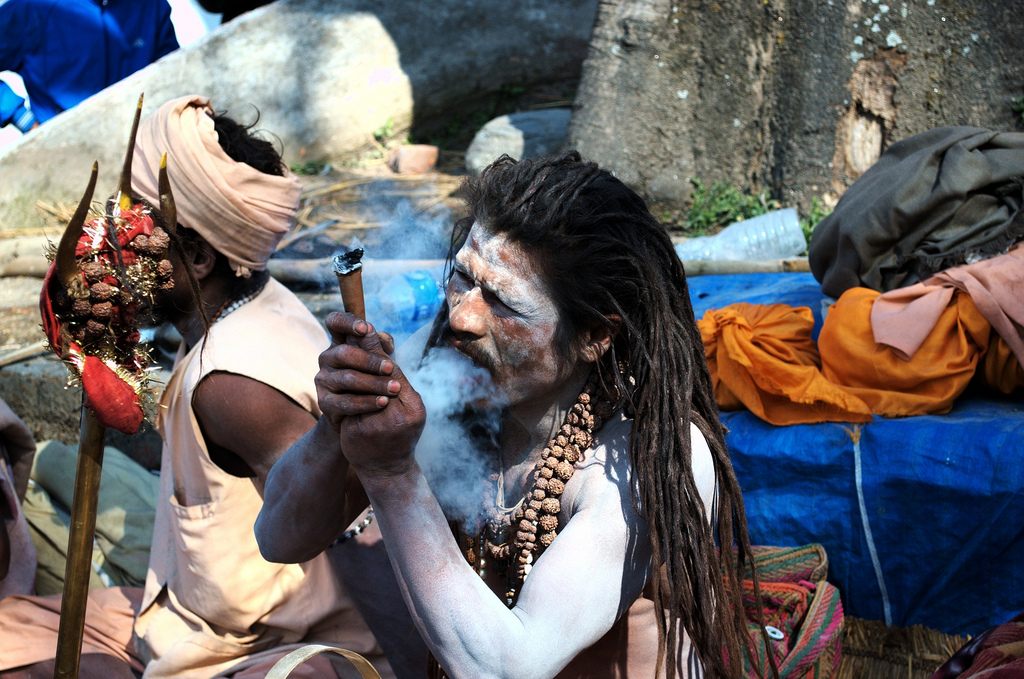
The etymology of the term "Cannabis" is believed to have roots in the Sanskrit word "Canna."
In the rich tapestry of Ancient Indian literature, the first allusion to Cannabis emerges within the Atharva-Veda. Within this text, Cannabis holds a revered status as one of the five sacred plants, purportedly sheltering a guardian angel within its leaves. It was regarded not only as a source of joy and happiness but also as a herald of liberation and freedom. Remarkably, this plant continues to play an integral role in religious and spiritual ceremonies throughout India.
Legend intertwines with the mention of Cannabis in an intriguing narrative. Before the genesis of the known universe, a sage, or Rishi, is said to have cast a curse upon the Devas, rendering them feeble. Consequently, the weakened Devas faced defeat at the hands of the Asuras, leading to their loss of dominion over the universe. To regain control, the gods sought the aid of the demons to retrieve the Amrita, or Elixir of Immortality. Together, they embarked on the task of churning the Kshir Sagar, the mythical Ocean of Milk, in a quest to obtain and share the coveted Amrita.
Tracing the History of Cannabis in India
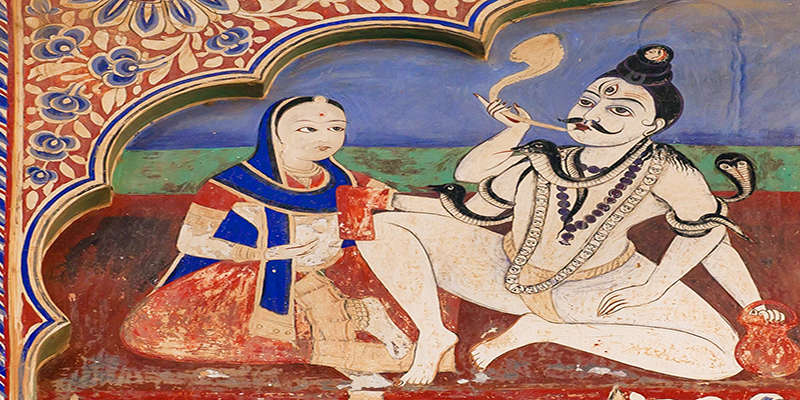
The historical and cultural depth of Cannabis within Indian traditions resonates prominently in the epic depiction known as Samudra Manthan, or the Churning of the Ocean. This vivid tale paints a fascinating tableau where Mount Mandara serves as the pivotal churning rod, while Vishnu, assuming his tortoise avatar Kurma, provides steadfast support for the rod. Vasuki, the esteemed King of the Nagas, plays the role of the churning rope in this grand cosmic drama.
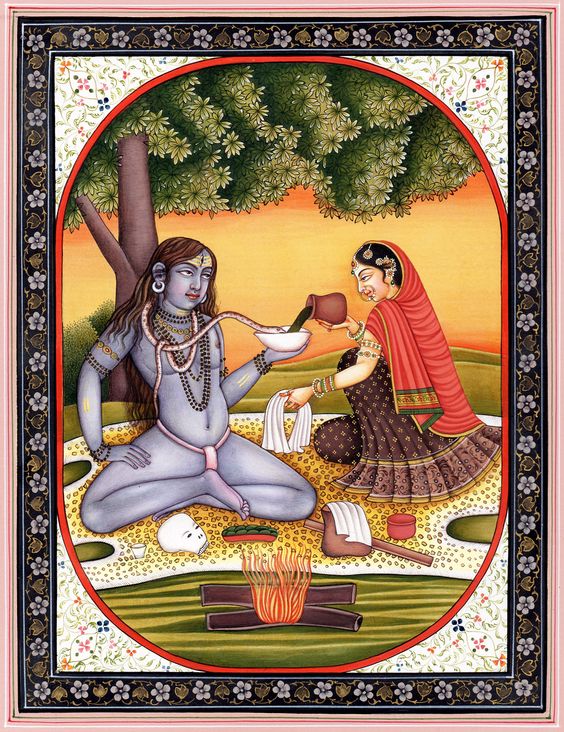
The endeavour of churning the ocean unraveled numerous elements prior to the appearance of the coveted Amrita. Among these emerged Halahal, a potent poison with the potential to annihilate the entire cosmos. Faced with this grave threat, the Devas invoked Lord Shiva to avert the impending cataclysm. Responding to their plea, Shiva, being immortal, willingly consumed the lethal poison to safeguard the universe from devastation.
Yet, the consequence was excruciating for Shiva. The poison, while unable to end his immortal existence, caused immense agony. Witnessing Shiva's distress, his beloved partner Parvati intervened by placing her hands upon his throat. Her divine intervention halted the poison's descent, bestowing upon Shiva a blue-hued throat. Henceforth, Shiva became known as NeelKanth, the blue-throated one. To alleviate Shiva's suffering, Parvati offered him Bhaang, a preparation made from Cannabis, to soothe his throat, body, and spirit.
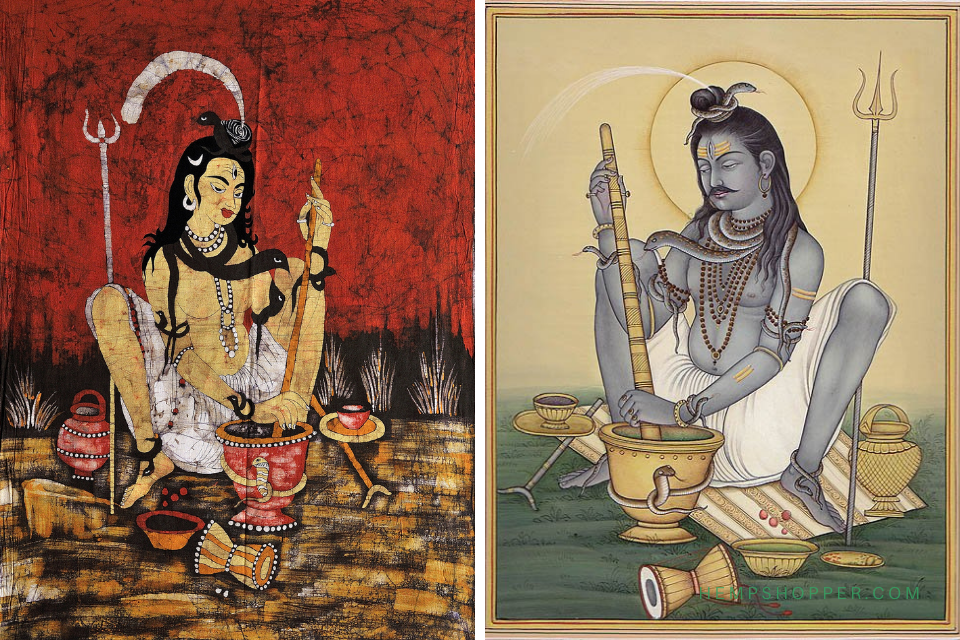
In another intriguing legend, Shiva, following a heated altercation with his family, sought solitude in the fields. In the sweltering heat, fatigued from the altercation and the weather, he sought respite under the shade of a tree, unknowingly taking shelter beneath a Cannabis plant. Resting for a while, Shiva, upon awakening, consumed some of the plant's leaves out of curiosity. To his surprise, he experienced rejuvenation and refreshment. Impressed by its effects, Shiva adopted the Cannabis plant as his favoured sustenance, purportedly subsisting on it for extended periods.
These captivating narratives interwoven with Cannabis not only highlight its historical significance within Indian culture but also underscore its perceived potency in bestowing relief, healing, and spiritual significance, solidifying its enduring presence in ancient traditions.
Cannabis in Ayurveda: Medicinal Heritage
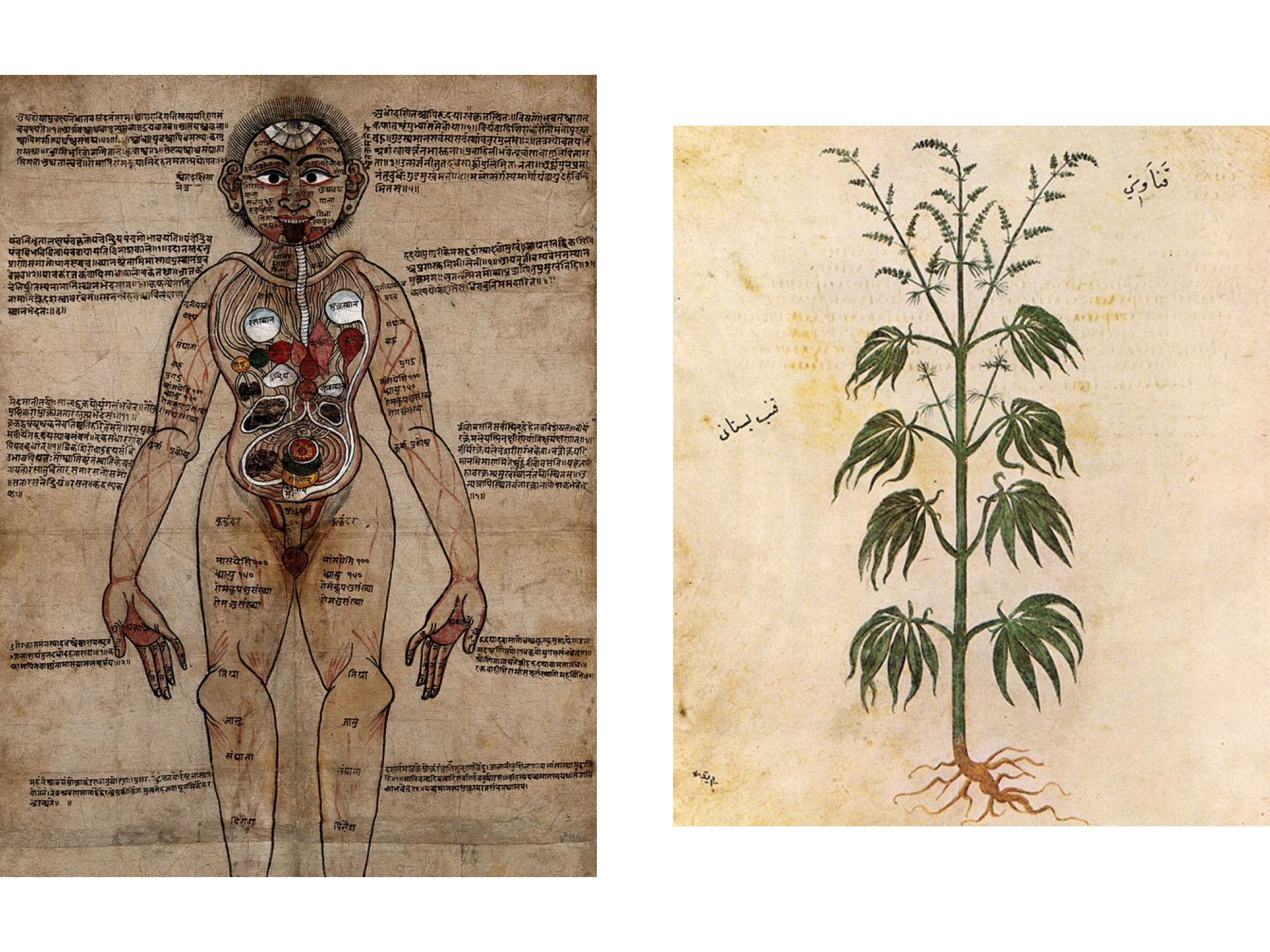
The role of Cannabis in Ayurveda, the ancient Indian science of life, extends beyond its spiritual significance, finding a place in medicinal applications. Devout ascetic followers of Shiva have historically employed Cannabis to attain a trance-like state in their spiritual practices known as Sadhana. Beyond its religious context, Cannabis has been revered for its therapeutic potential in Ayurvedic medicine. According to Ayurveda, every element possesses unique qualities, capable of medicinal utility, and Cannabis is no exception. Often hailed as the "penicillin of Ayurveda," it was utilised to address a wide spectrum of ailments.
The earliest reference to Cannabis in Ayurveda can be traced back to the Abhidhana Ratnamala, dating to the 9th or 10th century. In Ayurveda, Marijuana is referred to as ‘Vijaya’ and ‘Siddi,’ meaning conqueror and achievement, respectively. Remarkably, Cannabis was even categorised into different castes, reflecting the societal divisions of its time. White Cannabis was designated for Brahmins, believed to impart wisdom; Red for Kshatriyas, enhancing vitality; Green for Vaisyas, stimulating hunger and inducing calmness; and Black Cannabis for the Shudras, promoting sound sleep and rest. This classification underscores the deep integration of Cannabis into the fabric of Indian culture.
Cannabis has been recognised for its ability to facilitate conversations, foster social bonds, heighten physical awareness, and enhance pleasure in life, often prioritising social connections, art, and joy. Its attributes have shown efficacy in addressing mental health concerns such as depression, isolation, Alzheimer's, PTSD, schizophrenia, and anxiety.

Within Ayurveda, Cannabis is present in over 80 traditional formulations, some of which are still utilised in India today. Enumerating the full spectrum of its medicinal benefits extends far beyond the confines of this discussion.
Described as a source of joy and liberation, Cannabis consists of two major strains, Sativa and Indica, both indigenous to India. Termed the 'Penicillin of Ayurvedic Medicine,' Cannabis also found significant usage in the Unani system of medicine, prevalent among Muslims during medieval India. Even in Sikhism, the Nihang sect continues the tradition of consuming bhang, while historical records indicate Sikh warriors using it during battles to alleviate pain. This multifaceted history underscores the deep-rooted and multifaceted nature of Cannabis in India's cultural, religious, and medicinal landscapes.
Western Influence and India's Cannabis Ban

The historical perspective reveals a complex relationship between Western powers, particularly the Portuguese and British, and India's long-standing affinity for Cannabis. The Portuguese conducted a study in 1534, led by a botanist and doctor, acknowledging the use of Bhaang to enhance work, stimulate appetite, and facilitate labor among the local population. Subsequently, in 1549, another Portuguese doctor and natural historian documented various Bhaang recipes in "A Tract about the Drugs and Medicines of the East Indies.”
Contrastingly, the British administration, striving to curb Cannabis consumption in India, took divergent measures. In 1798, the British Parliament imposed a tax on Bhaang, Ganja, and Charas, purportedly for the natives' "health and sanity." However, this reasoning contradicted the longstanding positive relationship between Cannabis and Indian well-being. Despite subsequent attempts in 1838, 1871, and 1877 to criminalise Cannabis, the British endeavours failed in their Indian colony.
In 1894, the British government conducted a comprehensive nationwide study named the "Indian Hemp Drugs Commission" to comprehend the impact of Cannabis consumption on the local population. This study debunked the prevalent misconception associating Ganja consumption with insanity. It highlighted that moderate Cannabis use posed minimal to no ill effects, while excessive use only inflicted injury on the consumer without significantly affecting society.

Post the British colonial era, the 1961 international treaty, known as the "Single Convention on Narcotic Drugs," aimed to prohibit narcotic drug production and distribution. Despite objections from the Indian delegation, citing the treaty's intolerance toward India's social, cultural, and religious norms deeply rooted for centuries, the final draft did not include Bhaang in the definition of Cannabis, acknowledging its distinct cultural significance.
Regrettably, in 1985, the Indian government enacted the "Narcotic Drugs and Psychotropic Substances Act," prohibiting the production and sale of Cannabis flowers and resins while allowing individual states to regulate seeds and leaves. This transition marked a shift from resisting British attempts to criminalise Cannabis to succumbing to regulations set by the Indian government.
The historical narrative underscores the nuanced clash between cultural traditions, medicinal heritage, and external attempts to regulate Cannabis in India, showcasing a complex interplay of socio-cultural factors and governmental decisions over time.
America's Role in the 41 Billion Dollar Heist

The origins of India's Cannabis ban can be traced back to actions taken by the United States. While many U.S. states are now legalising cannabis for both medicinal and recreational purposes, this wasn't the case around 60 years ago. In the 1960s, the U.S. spearheaded a campaign to enforce a ban on cannabis. The Single Convention on Narcotic Drugs of 1961, under Article 28, classified cannabis as a highly regulated substance, restricting its cultivation and distribution to licensed individuals.
While the rationale behind the ban purported to control drug use and curb organised crime's involvement in narcotics, there were underlying motives related to the plant's potential industrial applications. Cannabis and its derivatives, like hemp, possess the remarkable ability to thrive in harsh conditions and grow rapidly. Different parts of the plant can be utilised in manufacturing fabric, medicines, animal fodder, and various other products. Some experts speculate that due to its cost-effectiveness in production, selling products derived from it was less lucrative for corporations, potentially influencing the ban.

India, not initially a signatory member of the 1961 treaty, succumbed to pressure from the Ronald Reagan-led United States administration. Under the government of Rajiv Gandhi in 1985, India passed the Narcotic Drugs and Psychotropic Substances Act. This act was partly influenced by the need for computers, vital for India to compete in the global digitalisation wave, in exchange for compliance with the U.S.-led ban on narcotics, including cannabis.
Currently, the United States holds the largest share in legal cannabis sales globally, with varying laws across states regarding its use. Despite this, the Indian market lost out on an entry into a multi-billion-dollar industry due to this influence. The legalisation process and increased societal acceptance of cannabis in recent years have spurred the establishment of startups aimed at innovating the industry to meet evolving consumer needs, including companies like Cresco Labs, Curaleaf, and Green Thumb Industries.

The global cannabis market's projected growth is substantial, with a forecasted value of USD 444.34 billion by 2030. This prohibitionist stance has cost India not only entry into a lucrative industry but also deprived it of potential advancements in medical research and hemp manufacturing.
India's deep-rooted affinity for marijuana remains pervasive despite legal constraints. Government estimates suggest that around 31 million individuals in India, approximately 2.8% of the population, reported using some form of cannabis in 2018. A report by Seedo indicated that Delhi alone consumed 32.38 metric tons of cannabis in 2018, potentially translating to substantial tax revenue, estimated at around Rs. 725 crore, as highlighted in an Aug 20th report by the legal think tank Vidhi Legal on the decriminalisation of cannabis.
This reluctance to decriminalise and leverage the benefits of cannabis has deprived India of a vast market for related products, particularly in the textile and agricultural sectors. With its resilient growth and cost-effectiveness, cannabis holds significant potential to benefit India's economy while being environmentally friendly. However, the continued adherence to an archaic and misguided law has resulted in the incarceration of hundreds of thousands and disrupted the livelihoods of millions, perpetuating a significant financial drain and funding illegal operations within the industry.
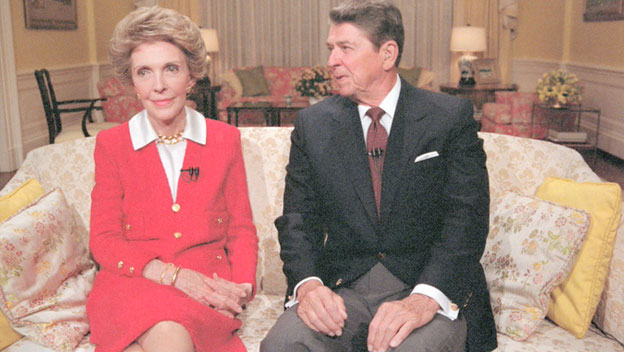
Is American Big Pharma behind the Negative Social Connotations of Marijuana in India?
The negative perception of marijuana in India has roots intertwined with the influence of major US firms, which reportedly support Indian NGOs to sustain this negative image, protecting their vested interests from potential losses. This stance contrasts with the fact that the US, despite previously pressuring India to criminalise marijuana, has now legalised it in numerous states for medical and recreational use. The origins of this conspiracy point to American pharmaceutical, liquor, and tobacco companies.
The pharmaceutical industry in the US already employs marijuana in painkillers and various medicines, marketing them at significantly higher prices. Legalising marijuana could severely impact these companies, resulting in a substantial downturn for the pharmaceutical, liquor, and tobacco sectors, as reported by The Washington Post.

In rural areas of the Himalayas, particularly during the monsoon season, marijuana grows abundantly and becomes an integral part of the tradition for inhabitants in small towns. For these communities, it stands as the sole cash crop viable in harsh weather conditions and challenging geographical terrains. Legalising marijuana could potentially lead to significant economic growth in India, surpassing the strides made in the US industry.
Forbes indicates that the hemp industry in the US, encompassing body care products, food supplements, and plastics, is projected to reach a $44 billion market by 2020, creating more jobs than the manufacturing sector. However, India's potential in this sector remains largely untapped despite the widespread growth of marijuana in the Indian Himalayas. Illegal cultivation of marijuana is rampant, particularly in regions like Himachal Pradesh, where over 60,000 kg of illegal production persists, with only a minimal fraction being intercepted. Seizure statistics from 2016 illustrate the enormity of this issue, with 1,82,622.85 kg of Ganja confiscated, yet only 11,303.78 kg disposed of, shedding light on the vastness of the illegal marijuana trade.
Some Scientifically Proven Facts about the Cannabis Plant
Scientific studies and expert reports, including one released by the World Health Organisation (WHO) in November 2017, have highlighted the promising medical benefits of the cannabis plant. Cannabidiol (CBD), a compound found in cannabis, has shown efficacy in treating epilepsy and exhibits potential for addressing various other medical conditions.

Ongoing research suggests that marijuana holds promise as a potential remedy for nervous system diseases due to its antispasmodic and anti-convulsive properties. Some of the recognised medical benefits of marijuana encompass:
- Sleep Aid: It has shown potential in aiding sleep-related issues.
- Muscle Relaxation: Known for its ability to relax muscles.
- Appetite Enhancement: Often used to stimulate appetite.
- Anxiety and Pain Relief: Offers relief from anxiety and serves as a pain reliever.
- Support for Terminal Illnesses: Provides relief to terminally ill patients.
- Aid in Recovery: Assists in expediting recovery from severe fevers like chikungunya.

Beyond its medical advantages, legalising marijuana in India could yield several additional benefits:
- Crime Reduction: Legalisation could eliminate illegal trade and associated criminal activities.
- Government Revenue: Taxation on legalised marijuana would generate substantial revenue, diminishing the existence of the black market.
- Employment Opportunities: Creating job prospects, potentially contributing to a reduction in the country's unemployment rate.
- Happiness Index Improvement: Data from numerous countries where marijuana is legal indicates a positive impact on a country's gross happiness index.
- Reduction in Harmful Substances: Legalisation might lead to decreased consumption of harmful substances like alcohol, cigarettes, and synthetic drugs, which pose health risks.
Considering the scientific evidence supporting its medicinal applications and the potential socio-economic advantages, the legalisation of marijuana in India could have profound effects on healthcare, economy, crime rates, and overall well-being.

Legalization Debate: Undoing Many Wrongs
The legal status of marijuana in India, as outlined in the NDPS Act of 1985, deems its possession, trade, transport, and consumption as criminal offences. Penalties for such actions can lead to imprisonment of up to 10 years and fines reaching up to one lakh rupees. Cultivation of marijuana in small quantities may result in penalties of 10,000 rupees or a jail term of 6 months to 1 year. Possession of commercial quantities could lead to imprisonment for up to 20 years and fines of two lakh rupees, while habitual offenders might face up to 30 years in prison.
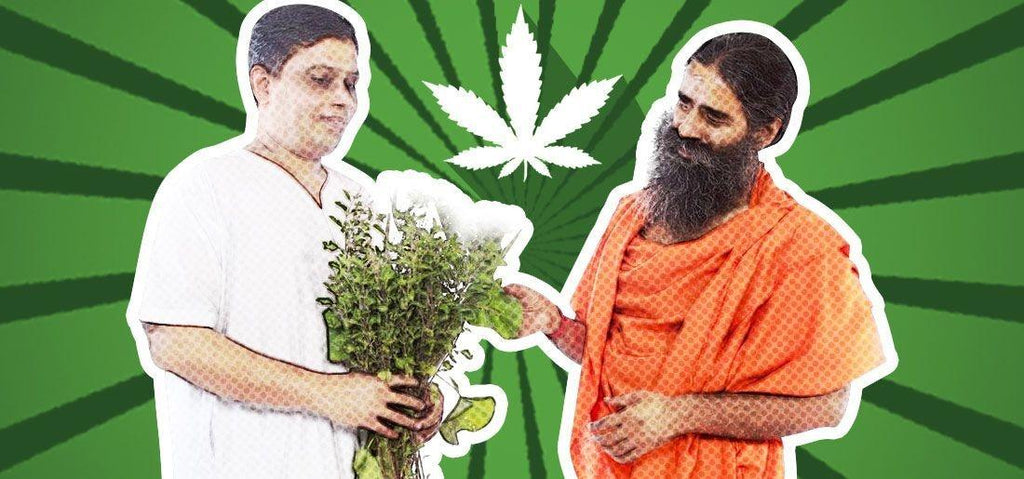
Noteworthy figures in Indian society, such as Union Minister Maneka Gandhi and Patanjali's Baba Ramdev, have expressed support for the legalisation of marijuana. They advocate for its utilisation in medicinal and industrial applications. This call for legalisation has sparked public discussions and social media debates, with personalities like actor Uday Chopra igniting conversations and controversy surrounding the issue.
An IndiaTimes article titled “Asia's Best Marijuana Is Grown In India And Its In Kerala” shed light on the exceptional quality of marijuana grown in India, particularly in Kerala. The plant thrives abundantly, especially in the Himalayan states like Uttarakhand and Himachal Pradesh, becoming an integral part of local cultures across the country.

Interestingly, although the government had provisions for licensing personnel to cultivate cannabis since 1985, the first license was granted much later in 2018. The Indian Industrial Hemp Association (IIHA) secured the inaugural license for cultivating non-narcotic hemp. In an interview, the founder-president of IIHA emphasised their plans to initiate hemp cultivation, primarily focusing on establishing a seed bank. They obtained permission to cultivate hemp on a pilot basis in Uttarakhand, spanning over 1,000 hectares. Currently, the company specialises in selling fibre derived from the hemp plant.
The slow progression towards licensing and cultivation of hemp in India highlights the evolving landscape surrounding marijuana and its non-narcotic variants, indicating a potential shift towards exploring its industrial and medicinal potentials within the country.

India's Recent Stand on Cannabis at the UN
The recent historic vote at the United Nations to remove cannabis and cannabis resin from the category of 'most dangerous substances' marked a significant shift in global perspectives. India's support for this proposal during the UN's convention on narcotics drugs showcases a changing attitude toward the plant's classification. This pivotal decision followed recommendations from the World Health Organisation (WHO) and was endorsed by the UN Commission on Narcotic Drugs (CND).
This move prompts reflection on how India, as a country, has been affected by historical circumstances, experiencing an inadvertent loss. It's a story of substantial value—how America inadvertently siphoned off significant wealth from India without much notice, while also detracting from India's cultural, historical, scientific, and financial potentials associated with cannabis.

Embracing Cannabis: A Call for Progressive Change
The fact remains that the Indian subcontinent has an extensive history of utilising and educating the world about cannabis and its multifaceted uses. In recent years, various individuals and organisations have actively engaged in enlightening the government and stakeholders about the manifold benefits that the legalisation and regulation of this plant could bring to the nation. Despite global advancements in acknowledging the potential of cannabis, India's viewpoint has predominantly regarded this plant as a "narcotic substance."
Instead of criminalising it, there's a call to embrace cannabis as an integral part of Indian culture. It's time to shed the colonial lens through which this plant has been viewed and recognise its diverse applications and contributions. Celebrating cannabis as an inherent facet of our culture, acknowledging its historical significance, and appreciating its potential benefits could reshape India's approach toward this plant, steering it toward a more progressive and inclusive standpoint.
© Copyright 2023. All Rights Reserved Powered by Vygr Media.

